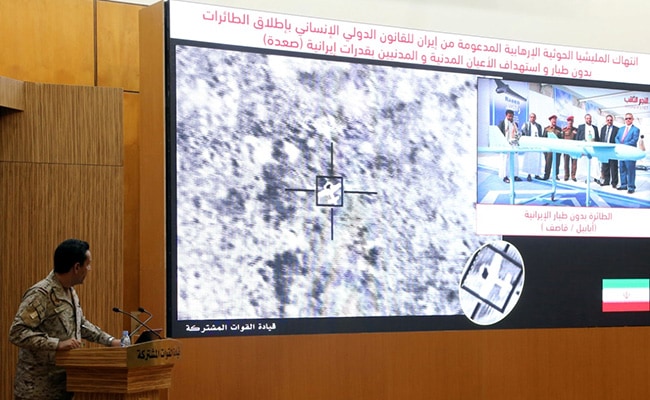Examining The Feasibility Of A Joint Swedish-Finnish Defense Partnership

Table of Contents
Shared Strategic Goals and Threats
The foundation for a robust Swedish-Finnish defense partnership rests on shared security concerns and aligned defense strategies.
Common Security Concerns
Both nations face similar threats, primarily emanating from Russia's military activities in the Baltic Sea region. This shared perception of threat forms a powerful impetus for closer collaboration. Specific concerns include:
- Increased Russian military activity: The significant increase in Russian naval and air force deployments near Finnish and Swedish territorial waters and airspace presents a tangible and immediate threat.
- Potential for hybrid warfare: Both countries recognize the risk of hybrid warfare tactics, including disinformation campaigns, cyberattacks, and economic coercion, designed to destabilize their societies and undermine their sovereignty.
- Cyber threats: The digital realm has become a key battleground, with both nations facing sophisticated cyberattacks aimed at critical infrastructure and government systems.
- Information warfare: Russia's use of information warfare to spread propaganda and sow discord within Finnish and Swedish societies represents a serious threat to national security.
Alignment of Defense Strategies
Examining the compatibility of existing Swedish and Finnish defense doctrines and strategies is crucial for assessing the feasibility of integration. While both countries have robust defense forces, integrating them will require careful consideration of:
- Comparison of military structures: The organizational structures of the Swedish and Finnish armed forces differ, requiring a detailed analysis of how best to integrate them efficiently.
- Procurement policies: Standardizing equipment and procurement policies will be a major undertaking, requiring significant investment and coordination.
- Operational doctrines: Harmonizing operational doctrines and procedures will ensure seamless interoperability between the two forces.
- Levels of military spending: Differences in military spending levels will need to be addressed to ensure a fair and equitable distribution of resources within a joint defense structure. Exploring potential synergies and identifying areas of conflict are essential for a smooth transition.
Practical Challenges of Integration
While a shared perception of threat provides a strong foundation, numerous practical challenges must be overcome to achieve successful defense integration.
Political Hurdles
Significant political obstacles stand in the way of a fully integrated defense partnership. These include:
- Public opinion: Gauging and managing public opinion in both countries is essential. A lack of public support could hinder progress.
- Political party stances: Different political parties hold varying viewpoints on defense cooperation and NATO membership, which could lead to internal political disagreements.
- Potential for internal opposition: Deepening defense integration could face opposition from groups concerned about national sovereignty or the potential costs involved.
Military Integration Challenges
Integrating the armed forces of two distinct nations presents complex military challenges:
- Differences in military equipment and technology: The Swedish and Finnish armed forces utilize different equipment and technologies, demanding significant investment in standardization or interoperability solutions.
- Challenges of interoperability: Ensuring seamless interoperability between different systems and platforms requires meticulous planning and substantial resources.
- Costs of standardization: Replacing existing equipment to achieve standardization will involve significant financial investment.
- Personnel integration and cultural differences: Integrating personnel from two different cultures and military traditions requires careful consideration of cultural sensitivities and potential integration challenges.
Economic and Financial Aspects
The economic feasibility of a joint defense partnership must be carefully assessed.
Cost-Benefit Analysis
A thorough cost-benefit analysis is crucial to determine whether the increased security and combined strength outweigh the financial investments. Key factors to consider are:
- Potential savings from shared procurement: Consolidating procurement can generate substantial cost savings through economies of scale.
- Economies of scale: Larger-scale operations can reduce per-unit costs across various defense domains.
- Increased efficiency: Joint operations and training can lead to increased efficiency and effectiveness.
- Cost of integrating forces and equipment: This includes the costs of standardization, interoperability upgrades, and personnel training.
Resource Allocation and Burden Sharing
Agreements on resource allocation and burden-sharing are vital to ensure the partnership’s long-term sustainability. Key considerations include:
- Fair distribution of costs and responsibilities: A fair and equitable distribution of financial burden and operational responsibilities is essential for maintaining political consensus.
- Agreements on resource allocation: Clear and mutually agreed-upon mechanisms for allocating resources are necessary to avoid conflicts and ensure efficient utilization of funds.
- Potential for conflict over funding and priorities: Differences in national priorities could lead to conflicts regarding funding allocation. Transparency and open communication are essential.
Geopolitical Implications
A joint Swedish-Finnish defense partnership would have significant geopolitical implications.
Impact on NATO and EU Relations
The partnership's impact on relations with NATO and the European Union requires careful consideration. Potential outcomes include:
- Strengthening Nordic defense cooperation: A joint defense partnership could significantly strengthen Nordic defense cooperation and enhance regional security.
- Implications for EU defense policy: The partnership could influence EU defense policy and contribute to a more integrated European defense architecture.
- Impact on NATO’s Baltic Sea strategy: The partnership could strengthen NATO's overall Baltic Sea strategy and enhance deterrence in the region.
- Reactions from Russia and other geopolitical actors: The partnership could provoke reactions from Russia and other actors in the region.
Regional Stability and Deterrence
The partnership would likely impact regional stability and deterrence.
- Increased deterrent effect against potential aggression: A combined Swedish-Finnish defense force would present a significantly stronger deterrent against potential aggression.
- Improved regional security: Enhanced defense cooperation could contribute to improved regional security and stability in the Baltic Sea region.
- Impact on the balance of power in the Baltic Sea region: The partnership would alter the balance of power in the Baltic Sea region, potentially affecting the strategic calculations of other actors.
Conclusion
This analysis of the feasibility of a joint Swedish-Finnish defense partnership reveals both significant potential benefits and substantial challenges. While a shared perception of threat and aligned strategic goals provide a solid foundation, political hurdles, military integration challenges, and economic considerations require careful attention. A successful partnership necessitates careful planning, open communication, and a steadfast commitment from both nations to overcome obstacles and build a truly integrated defense structure. Further research and detailed feasibility studies are crucial to fully assess the long-term viability and sustainability of a joint Swedish-Finnish defense partnership. Continued discussion and exploration of this vital topic are essential for securing the future of both nations and promoting stability in the wider Baltic region. The potential rewards of a strengthened Swedish-Finnish defense partnership are substantial, making further investigation into its feasibility a critical priority.

Featured Posts
-
 Confirmation Of Pope Francis Death At 88 Years Old
Apr 22, 2025
Confirmation Of Pope Francis Death At 88 Years Old
Apr 22, 2025 -
 Strained Ties Examining The Growing Divide Between The U S And China
Apr 22, 2025
Strained Ties Examining The Growing Divide Between The U S And China
Apr 22, 2025 -
 Pope Francis Passes Away At Age 88 After Pneumonia Illness
Apr 22, 2025
Pope Francis Passes Away At Age 88 After Pneumonia Illness
Apr 22, 2025 -
 Exploring New Business Opportunities Across The Country
Apr 22, 2025
Exploring New Business Opportunities Across The Country
Apr 22, 2025 -
 Saudi Aramco And Byd A Strategic Alliance For Electric Vehicle Innovation
Apr 22, 2025
Saudi Aramco And Byd A Strategic Alliance For Electric Vehicle Innovation
Apr 22, 2025
Latest Posts
-
 Elizabeth City Road Driver Kills Two In Pedestrian Collision
May 10, 2025
Elizabeth City Road Driver Kills Two In Pedestrian Collision
May 10, 2025 -
 Fatal Elizabeth City Pedestrian Accident Claims Two Lives
May 10, 2025
Fatal Elizabeth City Pedestrian Accident Claims Two Lives
May 10, 2025 -
 Discover The Renewed Queen Elizabeth 2 A Comprehensive Ship Tour
May 10, 2025
Discover The Renewed Queen Elizabeth 2 A Comprehensive Ship Tour
May 10, 2025 -
 Inside The Queen Elizabeth 2 A Post Makeover Tour For Cruise Enthusiasts
May 10, 2025
Inside The Queen Elizabeth 2 A Post Makeover Tour For Cruise Enthusiasts
May 10, 2025 -
 Mind The Gap Wheelchair Accessibility On The Elizabeth Line
May 10, 2025
Mind The Gap Wheelchair Accessibility On The Elizabeth Line
May 10, 2025
